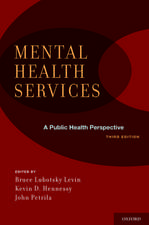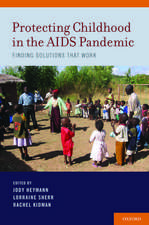A Public Health Perspective on End of Life Care
Editat de Joachim Cohen, Luc Deliensen Limba Engleză Paperback – 19 ian 2012
Preț: 509.02 lei
Preț vechi: 701.00 lei
-27% Nou
Puncte Express: 764
Preț estimativ în valută:
97.40€ • 101.69$ • 80.61£
97.40€ • 101.69$ • 80.61£
Carte tipărită la comandă
Livrare economică 24-31 martie
Preluare comenzi: 021 569.72.76
Specificații
ISBN-13: 9780199599400
ISBN-10: 0199599408
Pagini: 270
Ilustrații: Black and white line drawings and halftones
Dimensiuni: 171 x 246 x 15 mm
Greutate: 0.48 kg
Editura: OUP OXFORD
Colecția OUP Oxford
Locul publicării:Oxford, United Kingdom
ISBN-10: 0199599408
Pagini: 270
Ilustrații: Black and white line drawings and halftones
Dimensiuni: 171 x 246 x 15 mm
Greutate: 0.48 kg
Editura: OUP OXFORD
Colecția OUP Oxford
Locul publicării:Oxford, United Kingdom
Recenzii
This book should be read by everyone involved in end-of-life care. Hopefully, this will result in a sequel in which policy makers, professionals from the curative sector and politicians answer the call of this volume.
It can be refreshing to read about something, something you may be well acquainted with, when it is viewed from a quite different perspective. This book is about palliative care as a public health issue and is 'concerned with the quality of end-of-life care of populations, not just the individuals within them.'
As a clinical nurse specialist, a hospice nurse for over 20 years, and a nurse educator before that, I was quite fascinated by this book. Actually, I could not put it down for long. It is technical in parts, but the global information is interesting. I do not know of any book that intermingles end of life, palliative care, public health, and disease trajectories so well. 4 Stars!
The authors, an impressive team of international researchers, administrators and clinicians working together, argue that it is necessary to have a public health perspective on palliative care to manage the demographic challenges we face, both nationally and globally. This book will be useful for planners of health services at all levels of health care.
This book is the first of its kind in that it takes a unique look at the effect death has on modern society. In highlighting the inherent link between palliative and end-of-life care and public health, it starts the ball rolling, identifying a wide range of areas of palliative care that carry a public health message There is overlap in some of the chapters, but, rather than being grating, this acts to refresh what has recently been learned and to firm up ideas that are forming from previous chapters. Overall, this is an excellent book and one that should sit within the canon of palliative care reading.
It can be refreshing to read about something, something you may be well acquainted with, when it is viewed from a quite different perspective. This book is about palliative care as a public health issue and is 'concerned with the quality of end-of-life care of populations, not just the individuals within them.'
As a clinical nurse specialist, a hospice nurse for over 20 years, and a nurse educator before that, I was quite fascinated by this book. Actually, I could not put it down for long. It is technical in parts, but the global information is interesting. I do not know of any book that intermingles end of life, palliative care, public health, and disease trajectories so well. 4 Stars!
The authors, an impressive team of international researchers, administrators and clinicians working together, argue that it is necessary to have a public health perspective on palliative care to manage the demographic challenges we face, both nationally and globally. This book will be useful for planners of health services at all levels of health care.
This book is the first of its kind in that it takes a unique look at the effect death has on modern society. In highlighting the inherent link between palliative and end-of-life care and public health, it starts the ball rolling, identifying a wide range of areas of palliative care that carry a public health message There is overlap in some of the chapters, but, rather than being grating, this acts to refresh what has recently been learned and to firm up ideas that are forming from previous chapters. Overall, this is an excellent book and one that should sit within the canon of palliative care reading.


















